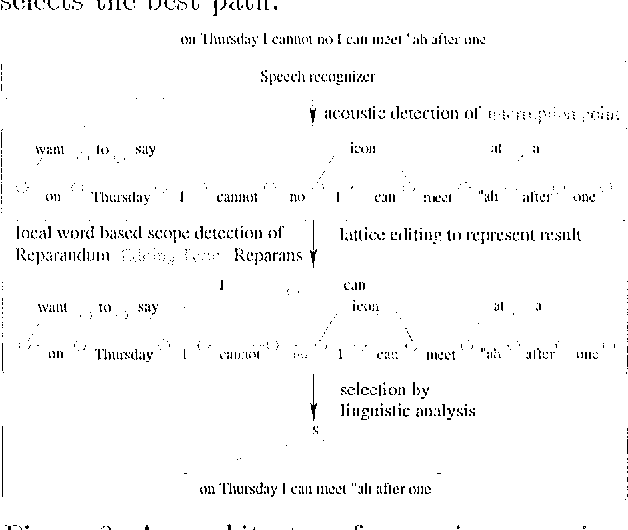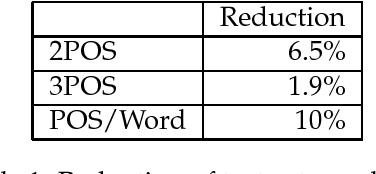Joerg Spilker
Processing Self Corrections in a speech to speech system
Aug 21, 2000
Abstract:Speech repairs occur often in spontaneous spoken dialogues. The ability to detect and correct those repairs is necessary for any spoken language system. We present a framework to detect and correct speech repairs where all relevant levels of information, i.e., acoustics, lexis, syntax and semantics can be integrated. The basic idea is to reduce the search space for repairs as soon as possible by cascading filters that involve more and more features. At first an acoustic module generates hypotheses about the existence of a repair. Second a stochastic model suggests a correction for every hypothesis. Well scored corrections are inserted as new paths in the word lattice. Finally a lattice parser decides on accepting the rep air.
* 5 pages, 2 figures
Architectural Considerations for Conversational Systems -- The Verbmobil/INTARC Experience
Jul 14, 1999
Abstract:The paper describes the speech to speech translation system INTARC, developed during the first phase of the Verbmobil project. The general design goals of the INTARC system architecture were time synchronous processing as well as incrementality and interactivity as a means to achieve a higher degree of robustness and scalability. Interactivity means that in addition to the bottom-up (in terms of processing levels) data flow the ability to process top-down restrictions considering the same signal segment for all processing levels. The construction of INTARC 2.0, which has been operational since fall 1996, followed an engineering approach focussing on the integration of symbolic (linguistic) and stochastic (recognition) techniques which led to a generalization of the concept of a ``one pass'' beam search.
 Add to Chrome
Add to Chrome Add to Firefox
Add to Firefox Add to Edge
Add to Edge